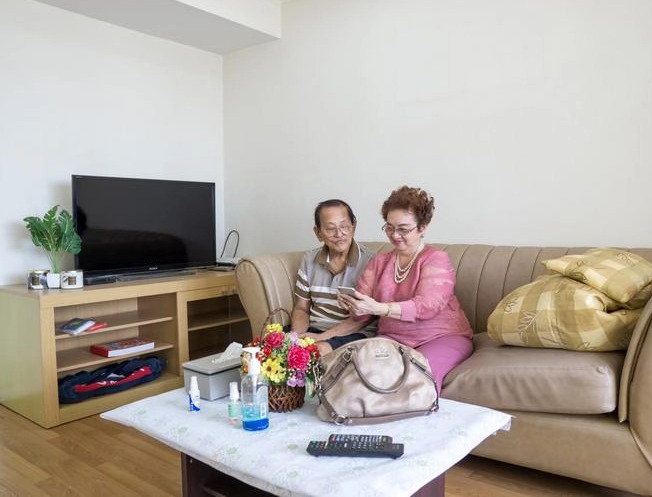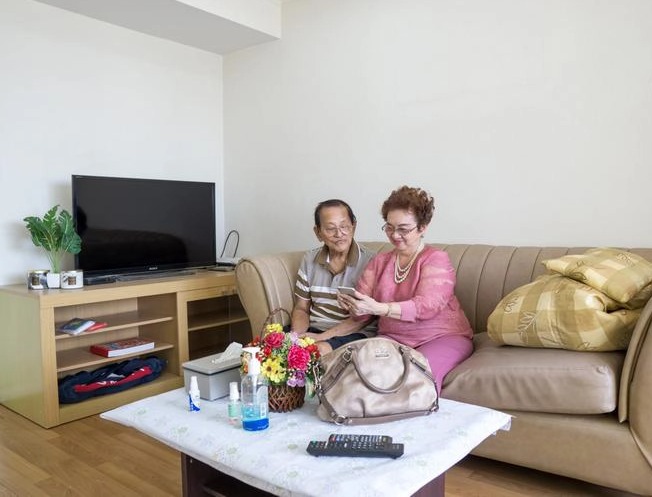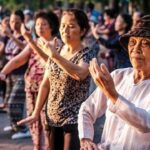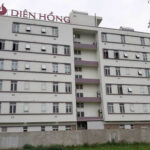
Illustrative image.
Currently, only a few investors have initially approached this potential market
According to the latest report by the Vietnam Real Estate Brokers Association, housing models for the elderly are expected to be a promising type of real estate.
Specifically, according to the General Statistics Office of Vietnam, the country started its population aging process in 2011 and is one of the fastest-aging countries in the world. By 2024, the number of people aged 60 and over reached 14.2 million, an increase of 2.8 million compared to 2019 and 4.7 million compared to 2014.
It is forecasted that by 2030, the number of people aged 60 and above will reach nearly 18 million, an increase of almost 4 million compared to 2024. At the same time, the birth rate in Vietnam has been decreasing rapidly in recent years. From 1.96 births per woman in 2023, it dropped to 1.91 births per woman in 2024 – the lowest rate ever recorded.
The experience of developed countries such as Japan, South Korea, China, and European countries shows that once the birth rate drops to a low level, it is unlikely to recover.
This rapid population aging trend is expected to continue, as the proportion of elderly people will keep increasing. This is due to the expected rise in life expectancy among Vietnamese citizens as living conditions improve with economic development, while the youth population shrinks due to low birth rates, unlikely to surge.
Many experts predict that Vietnam will become an aged population by 2036 and a super-aged population by 2049.
This demographic shift underscores the urgent need to develop housing models, healthcare services, and specialized facilities catering to the elderly. There are millions of elderly individuals in need of care.
However, currently, there are only about 400 nursing homes in the country, with approximately 50% being charitable or state-invested centers. There is a particular shortage of premium services such as housing models for the elderly – a combination of real estate and home healthcare services, as the number of elderly individuals with financial capabilities continues to grow.
In reality, areas with higher average life expectancies tend to have more developed economies. Specifically, the report by the General Statistics Office in 2024 showed that Ba Ria-Vung Tau, Da Nang, Ho Chi Minh City, Hanoi, and Dong Nai were the top five provinces/cities with the highest life expectancy in Vietnam. These areas also boast developed economies and high per capita incomes among the best in the country. In contrast, less economically developed provinces like Lai Chau, Dien Bien, and Kon Tum have the lowest life expectancies.
Currently, most elderly people are cared for by their children and grandchildren at home and prefer to receive care services at home or near their families. This indicates a significant potential for developing a model of community-integrated housing, providing a safe and comfortable living space while maintaining family connections. However, only a few investors have initially approached this segment.
The potential of a new real estate model
The VARS report suggests that developing housing models for the elderly is particularly relevant in the context of expanding customer segments. The middle and upper classes are growing rapidly, with the middle class typically aged 30-55 and the upper class aged 40-65. Thus, these segments will drive the demand for premium housing, including housing for the elderly, in the present and the next decade.
As their financial capabilities increase, they can choose living spaces that cater to their needs as they age. Additionally, Vietnam has competitive advantages in natural landscapes, culture, and relatively low living costs compared to many developed countries, attracting retired foreigners and overseas Vietnamese to return.
Along with economic conditions, the psychology and lifestyle preferences of the elderly are also evolving. Modern seniors prioritize scientific living, staying active and healthy, and maintaining their independence. They value opportunities for community engagement, physical exercise, and suitable recreational activities. Most are well-educated and have lived or worked in large cities or foreign countries. They are the accumulation generation with financial capabilities suited to this type of housing.
The demand for premium housing for the elderly will persist in the future. Research by reputable global organizations also indicates that the generation born between 1981 and 2000 is considered the wealthiest in history due to inheriting family wealth. This generation will enter their 60s in the next two decades.
In countries with aging populations such as Japan, Germany, Sweden, and Australia, housing for the elderly is not just a place of residence but has evolved into an integrated living ecosystem: combining housing, healthcare, community engagement, and psychological support.
Prominent models like “Continuing Care Retirement Communities” (CCRC) in the US and “smart aging villages” in Japan offer multi-layered services – from independent living with medical supervision to special care for those with chronic illnesses. These models share a common focus on supporting the elderly to live independently, stay socially connected, and receive professional care tailored to their changing health needs.
An important insight from these models is the necessity to develop a comprehensive ecosystem rather than standalone projects.
Thus, VARS believes that the housing model for the elderly holds great potential by catering to the needs and psychology of modern seniors. To summarize, unlike traditional nursing homes that primarily focus on medical care and daily living for the frail or single elderly, the typical housing model for the elderly consists of high-rise buildings integrated with home healthcare services, developed in urban areas on the outskirts of major cities. Here, the elderly and their spouses can live together or easily maintain connections with their families. The apartments should be designed to accommodate the needs of the elderly, integrating on-site medical services, community amenities, and green living spaces.
Developing this type of real estate not only enables investors to seize opportunities arising from high demand but also allows them to benefit from encouraging policies. The national strategy on population aging promotes smart and decentralized elderly care models.
Additionally, developing senior housing projects is often associated with large satellite urban areas, where land prices are relatively soft compared to core urban areas, helping investors save on input costs and benefit from the improving transportation system that shortens the distance between the center and the outskirts.
Is Vietnam Ready for the Silver Economy?
Vietnam entered an aging population phase in 2011 when the proportion of elderly people over 60 years old exceeded 10%. This figure continued to rise rapidly and is expected to reach 25% by 2050. However, the “silver economy” has only truly come to life in the last couple of years, despite businesses recognizing this opportunity over a decade ago. After more than ten years of development, the variety of goods and services catering to this demographic is increasing, but at a rather modest pace.
The Real Estate Giants: Tapping into the Booming Senior Living Market
The demand for senior healthcare services is experiencing a significant surge, both in volume and complexity, amidst a rapidly aging population. Recognizing this opportunity, real estate giants are swiftly moving to cater to this evolving market, positioning themselves to meet the unique needs of this demographic shift.


















